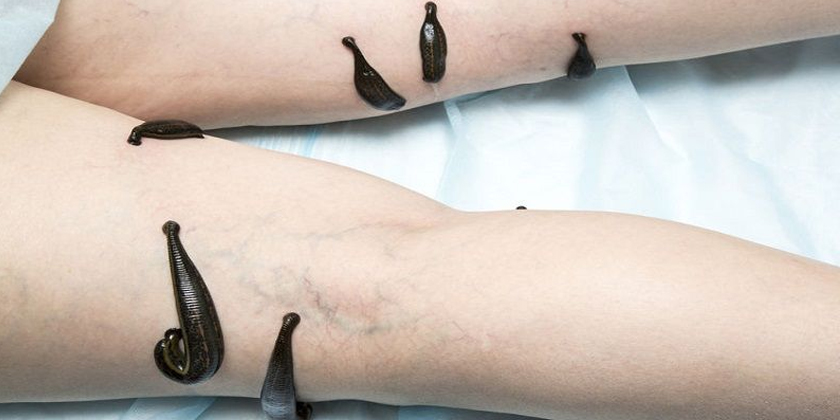Leech Therapy for Deep Vein Thrombosis: What You Need to Know
Leech Therapy for Deep Vein Thrombosis: An Alternative Approach
What Makes Leech Therapy a Possible Treatment Option for Deep Vein Thrombosis?
Deep vein thrombosis untreated may result in the dangerous pulmonary embolism complication which carries a death risk of 10–30% according to the American Society of Hematology. With five years of public health research work I have conducted studies on hirudotherapy for vascular health applications. Anticoagulants including heparin remain the primary treatment for blood clots but leech therapy shows potential anticoagulant and anti-inflammatory benefits in specific cases despite limited supporting evidence (Frontiers).
How Leech Therapy Works
1. Mechanisms of Hirudotherapy
The therapeutic potential of leech saliva lies in its bioactive compounds which could theoretically offer advantages for deep vein thrombosis issues.
- Anticoagulant Action: Hirudin inhibits thrombin, preventing clot progression (Healthline).
- Anti-Inflammatory: Eglins and bdellins serve to diminish swelling while delivering inflammation relief as reported by ScienceDirect.
- Blood Flow Improvement: Leech therapy‘s suction mechanism combined with passive bleeding helps to reduce venous congestion according to NCBI.
2. Application in DVT
While leech therapy isn’t the main treatment option for deep vein thrombosis it may serve as a supplementary approach in certain situations.
- Localized Congestion: Reducing edema in superficial veins post-DVT (ResearchGate).
- Chronic Venous Insufficiency: The African Journal of Vascular Medicine details how to treat post-thrombotic syndrome symptoms including swelling.
- Adjunctive Use: Leech therapy serves as a supplementary treatment in complex medical cases but lacks scientific validation (PubMed).
Potential Benefits of Leech Therapy
- Inflammation Relief: The saliva from leeches can help diminish swelling in affected body parts and alleviate discomfort according to ScienceDirect.
- Localized Blood Flow: Applying suction therapy may help reduce venous congestion which leads to enhanced vascular health according to Gavin Publishers.
- Pain Reduction: Analgesic compounds deliver short-term pain relief for patients suffering from post-thrombotic syndrome according to Frontiers.
- Non-Invasive Option: Patients with blood clots might find leech therapy to be a helpful treatment option in certain situations since it eliminates the need for surgical procedures (NCBI).
Risks and Limitations
- Infections: Patients face a 7–20% chance of contracting Aeromonas bacterial infections which may exacerbate vascular health conditions (PubMed).
- Excessive Bleeding: Transfusions become necessary for half to all patients which raises additional risks for those with DVT according to PMC research.
- No Direct Clot Dissolution: Leeches cannot dissolve existing blood clots since they function differently compared to thrombolytics (JAMA Network).
- Lack of Evidence: Medical News Today reports that randomized trials do not exist to support the use of leech therapy for treating deep vein thrombosis.
- Contraindications: Healthline advises against using leech therapy for patients who take anticoagulants or those who have anemia or immune system deficiencies.
Scientific Perspective and Research Gaps
The 2024 review confirmed that hirudotherapy helps reduce venous congestion during reconstructive surgeries but failed to find direct evidence supporting its use for DVT treatment (Frontiers). Research from the African Journal of Vascular Medicine indicated that leech therapy reduced edema in post-thrombotic syndrome but produced inconsistent results. Anticoagulants and compression dressings achieve a 90% success rate in treating DVT while leech therapy lacks comparable clinical data according to the American Society of Hematology. The experimental status of leech therapy for deep vein thrombosis emerges from my analysis because its risks surpass the yet-to-be-proven benefits. Clinical trials are essential.
FAQ: Leech Therapy for Deep Vein Thrombosis
Leech therapy for deep vein thrombosis involves using leeches to treat venous congestion and inflammation despite its experimental status and lack of standard treatment data.
Leech therapy for deep vein thrombosis employs leeches to potentially alleviate venous congestion and inflammation yet remains outside standard treatment protocols (NCBI).
Can it dissolve blood clots?
Anticoagulants are essential in treating blood clots because leeches cannot dissolve them (JAMA Network).
Is it safe for DVT patients?
The therapy poses infection and bleeding risks which are particularly pronounced for patients taking anticoagulants (PubMed).
Should I try leech therapy for DVT?
The CDC advises seeking medical advice because established treatments provide better vascular health results.



